For ages, gardeners have kept a secret weapon – Epsom salt. This article aims to outline the advantages of using Epsom salt specifically for tomato plants to increase productivity and encourage healthier growth. You need to know that magnesium sulfate aids in several critical plant processes, like photosynthesis and nutrient uptake. Some step-by-step guidelines will be given on various application methods such as soil amendment, foliar spray or watering solution. By the time you finish going through this guide, you will have enough knowledge on how to effectively use your gardening routine to enhance strong tomato flavors through the incorporation of Epsom salts in it.
Why Should You Use Epsom Salt for Tomato Plants?
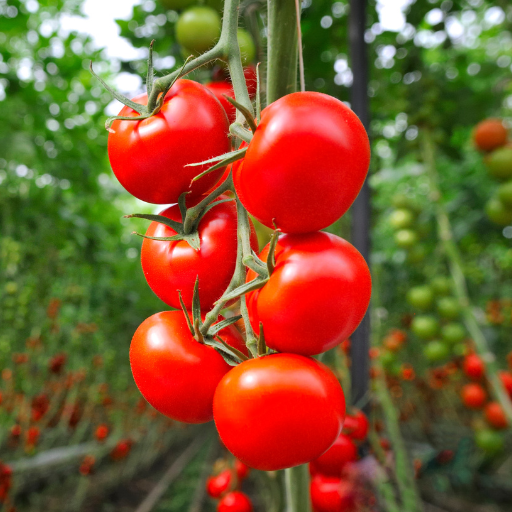
Using Epsom salt on tomatoes has numerous important advantages. Magnesium plays a vital role in photosynthesis, supporting chlorophyll production that helps feed the plants and give them energy. In addition, magnesium aids in the absorption of necessary nutrients such as nitrogen and phosphorus, thereby improving overall plant health and increasing its size. Besides, sulfate, another Epsom salts component, contributes to enzymes and proteins production. Beyond that, by applying Epsom salts you will be able to avoid such typical problems as blossom end rot and yellowing of leaves for healthy tomato plants.
Understanding the Benefits of Epsom Salt for Plants
The crucial components of Epsom salt—magnesium and sulfates—make it highly effective in improving the growth rate and quality of tomato plants. Magnesium is essential for making chlorophyll, which are used in photosynthesis. This ensures they can turn sunlight into chemical energy faster leading to a healthier growth and robustness.Magnesium also facilitates uptake of main elements like nitrogen, phosphorous and sulphur needed in growth promotion.
On the other hand, sulfur contributes immensely to enzyme protein synthesis required for plant development. It participates in the formation of essential molecules such as amino acids while enhancing general cellular metabolism in plants. When combined with magnesium’s effects, this makes Epson salt invaluable for your gardening needs.
Technically speaking one tablespoonful should be mixed with gallon full water whether its soil amendment or irrigation solution. Dissolve one tablespoonful Epsom salt into gallon container filled with water then directly apply it on the leave surface after every two weeks when preparing foliar sprays routine.Thus it prevent incidences like blossom end rot where enough supply magnesium is maintained thus keeping up lively nature together with productivity enhancement among your tomato plants.
How Epsom Salt Helps Tomato Plants with Magnesium Deficiency
A magnesium deficiency may result interveinal chlorosis where leaves become yellow but veins remain green, retarded growth of plants and reduced fruit set in tomato. Epsom salt adequately deals with this deficiency due to its rich magnesium content. By dissolving it in water and either applying as a foliar spray or to the soil, Epsom salt provides a readily available source of magnesium that is easily absorbed by plants. This activity ensures that nutrient levels are restored to normal, allowing tomatoes to regain their chlorophyll production ability and attain efficient photosynthesis hence robust growth. It is advisable to employ this method regularly so you prevent deficiencies from affecting plant’s health.
The Role of Sulfur in Tomato Plant Health
Sulfur plays an essential role in the overall well-being of tomatoes through its involvement in synthesizing crucial amino acids, enzymes and vitamins. It stimulates the formation of chlorophyll which is important for photosynthesis.Sulfur also improves development of healthy green foliage while enhancing disease resistance within the plant body. Tomatoes can only thrive well and produce abundant tasty fruits if sulfur enhances root system formation as well as seed production. Consistent supplementation using Epsom salts containing sulfur helps keep sufficient levels of this element in soils promoting general vitality too among plants.
When and How Often Should You Add Epsom Salt to Tomato Plants?
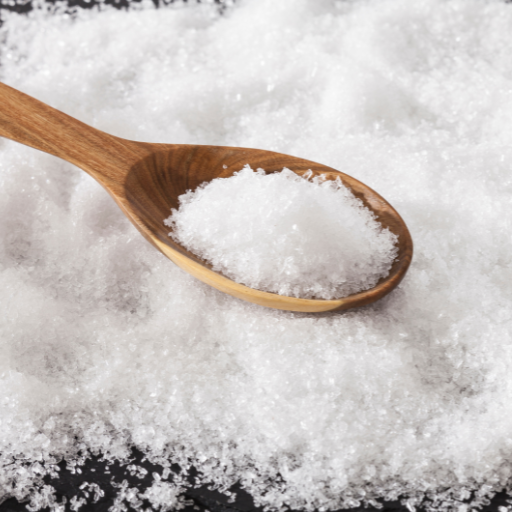
For the tomato plants to grow optimally, it is necessary to apply Epsom salt at certain intervals. At planting time, mix one or two tablespoons of Epsom salts into the soil of each hole. During the season, every four to six weeks spread Epsom salt over the plant leaves. This can be achieved by dissolving a tablespoonful of Epsom salts in a gallon of water and using this solution to water them, or by sprinkling dry salt around each plant’s base and gently raking it in followed by watering. Regular addition ensures that there are always enough magnesium and sulfur for growth towards healthy development and good yields.
The Best Times for Applying Epsom Salt
Apply Epsom Salt in Tomato Plants at Time of Planting, First Bloom Stage Plus Fruits Formation on Tomato plants Best times for applying Epsom salt to tomato plants include planting time, first bloom stage and when fruits begin forming. Incorporate Epsom salts directly into the planting hole during transplanting to give the young plant a strong start. During flowering stage, additional application ensures that all nutrients required for blossom development are available in the plants. Lastly; as fruit starts forming application of Epsom salt helps improve their size as well as taste while preventing blossom-end rot and other deficiency diseases associated with minerals These gaps gives tomato plants timely dose of magnesium and sulphur required for their growth and productivity.
Symptoms That May Indicate Need for Tomato Plant Supplements Containing Magnesium
Firstly, one obvious sign that your tomato might require some epsom salt is yellowing leaves especially between leaf veins which is a clear indication of magnesium deficiency. Similarly if you notice fewer than expected fruits from your tomatoes or smaller fruits which also have more occurrences on blossom end rot could be an alarm that they do not have sufficient nutrients such as sulfur and magnesium among others.Curled leaves can also occur where tomatoes need magnesium to support overall plant health and development. Regular addition of Epsom salt can be one way of solving this problem so as to ensure more tomatoes are produced.
Rate of Application for Healthy Development
To keep the tomato plants healthy and productive, they should be supplemented with Epsom salt every 2-4 weeks during their growth season. A common method is dissolving a table spoon of Epsom salts in a gallon of water and applying it around the plants’ base. Alternatively put a table spoonful of Epsom salt around each plant ad soak it well. Consistent application at these intervals has been attributed to soil acidity hence enhancing good growth, robust foliage and quality fruit production by maintaining adequate magnesium levels within the soil.
How to Apply Epsom Salt to Your Tomato Plants
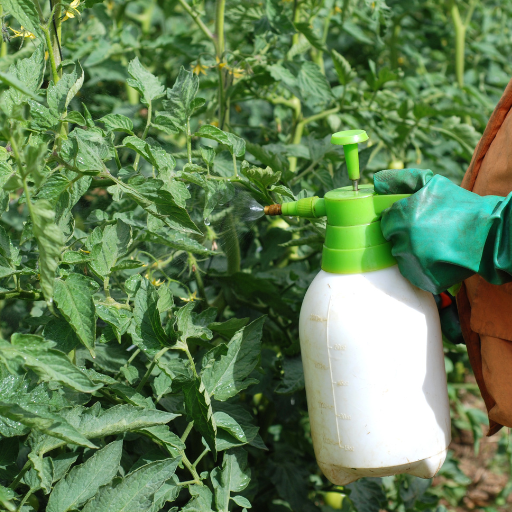
To apply Epsom salt to your tomato plants, start off by making a mixture of one tablespoonful of Epsom salt dissolved in a gallon of water. This solution is then used to water the base of the plants every two or four weeks. Alternatively, you could scatter dry Epsom salt around each plant using about one tablespoon per plant and water thoroughly so that the salt dissolves into the soil. It is for this reason that you should ensure proper absorption through roots to deliver magnesium and sulfur efficiently into plant’s roots. One tablespoon of Epsom salt mixed with a gallon of water, sprayed over leaves every 14 days can work quickly on magnesium deficiencies.
Adding Epsom Salt: Soil and Foliar Application Methods
When it comes to adding Epsom salts to tomato plants, there are two major techniques: soil application and foliar application. Both methods have unique benefits and can be employed to supply the magnesium and sulphur required for optimal growth.
Soil Application:
- Dissolving Epsom Salt in Water: Dissolve one tablespoonful of Epsom Salt in Gallon of Water. This solution is then used to water the base of plants every two weeks or more depending on their size. This method aids direct nutrient intake from soils as well as supports root system health.
- Dry Application: Sprinkle about one tablespoonfuls of Epson Salt around each plant before watering enough. Help dissolve the salts into soil allowing essential Magnesium & Sulfur be absorbed through roots.
Foliar Application:
- Mixing Epsom Salt in Spray Bottle: Combine one tbspful of Epsom salts with a gallon-full tank of clean water, then pour into a spray bottle. For a quick remedy regarding lack of magnesium, mist leaves at least twice every 15 days. This way, nutrients can be rapidly absorbed through stomata at foliage, thus becoming a perfect approach when the symptoms of deficiency are visible.
Technical Parameters:
- Solution Concentration: In both the soil and the foliar applications, one tablespoonful of Epsom salt is added in a gallon of water. This prevents magnesium (10%) and sulfur (13%) from falling outside healthy limits, but without risking excessive amounts of these micronutrients.
- Application Frequency: It is recommended that you apply consistently every two or four weeks to maintain desirable nutrient levels and prevent deficiencies.
These techniques alongside their parameters have been supported by reliable sources that stress on importance of maintaining right magnesium quantities for robust growth, better fruit quality and general good health among plants.
How Much Epsom Salt to Use per Gallon of Water: Proper Dosage.
The best advice from top sources is that a teaspoonful of Epsom salt can be added to one gallon of water for nutrient solution. In fact, this amount works well whether the aim is to feed the soil or spray it onto the leaves and stems.
Technical Parameters:
- Soil Application Dosage: One tablespoon of Epsom salt per gallon of water.
- Foliar Application Dosage: One tablespoon of Epsom salt per gallon of water used as a leaf spray every two weeks.
- Solution Concentration: One tablespoon per gallon maintains an optimal magnesium content of 10% and sulfur content of 13%.
- Application Frequency: To sustain the right levels and prevent deficiencies, both soil and foliar methods need to be carried out after every two-four weeks.
The above parameters are valid in so far as they comply with professional advice thus enabling plants to get nutrients requisite for their healthy growth without overloading them with minerals leading to over fertilization problems in fruits which may affect its quality drastically.
Creating a Spray Solution with Epsom Salt for Tomato Plants
To come up with a mixture for tomato sprays composed mainly by epsom salts, dissolve one table spoonfuls of epsom salts into 1 gallon of hot waters. Make sure there are no lumps remaining in the solution. The liquid should then be poured inside a spray container sprayed on tomato plant leaves directly. The sun does not glare during early morning hours or when evening sets in hence avoid spraying during these times because it could scorch the leaves. Applying an Epsom salt spray once every other week will ensure enough magnesium levels in your tomatoes hence more vigorous growth and better fruit quality.
Can Epsom Salt Prevent Common Tomato Plant Problems?

Yes, Epsom salt can assist in curbing certain common maladies of a tomato plant. Magnesium deficiency in tomato plants often manifests as yellowing on leaves between veins. It can solve these by adding magnesium to the soil, thereby ensuring green and healthy foliage. Furthermore, it makes better flower and fruit production rates leading to more harvests. Nonetheless, Epsom salt does not cure all; it cannot stop blights or pests like aphids. Using balanced soil nutrients and good gardening practices alongside Epsom salt will ensure healthier and stronger tomatoes.
Preventing Blossom End Rot with Epsom Salt
Primarily caused by lack of calcium and inconsistent watering blossom end rot is not associated with magnesium deficiency hence Epson salt alone cannot be used to treat this condition. Although correcting magnesium deficiencies is possible using Epsom salt, it doesn’t provide the calcium necessary for preventing blossom end rot either. On the contrary, excessive use of Epson salt could escalate the situation by raising levels of magnesium which interferes with absorption of calcium among other things. To prevent blossom-end rot, maintain even soil moisture throughout the growing season and consider applying calcium supplements like crushed eggshells or calcium nitrate. Consistent watering and maintaining balanced soil nutrients are key to avoiding it on tomato plants.
Treating Chlorosis and Magnesium Deficiency
Chlorosis being a lack of enough chlorophyll that causes leaves to turn yellow can happen because of low magnesium levels in tomatoes plants when there is no enough chlorophyll. You should do this by mixing your garden care schedule with Epsom salt. One tablespoonful of Epsom salts put into one gallon of water and sprayed directly onto the foliage will quickly boost its supply of magnesium ions for any plant found outdoors in yards or gardens (such as shrubs). Alternatively you may also mix Epson salts over their bases before planting them into earth mounds. Regular applications every two weeks can help combat chlorosis and promote dark green leaves. As with any supplementation, monitor the plants and adjust the treatment as needed to avoid over-application.
Improving Overall Soil Quality and Health
The improvement of overall soil quality and health is crucial for optimal growth and productivity of plants. Start by doing a soil test in order to determine the current nutrient levels and pH balance. Based on your results, amend the soil with organic matter such as compost or well-rotted manure which improves soil structure, water-holding capacity, and microbial activity . This is because crop rotation and cover cropping are good ways of improving soil’s nutrient deficiency, eroding soils reduction as well as increasing biodiversity. Also do not over-till because it disrupts the beneficial organisms in the soil structure. The use of organic materials to mulch helps retain moisture , regulate indoor temperature of soil while depriving sunlight that promotes weed growth among other benefits thus this will enable your land remain fertile in long run.
Can Epsom Salt be Used with Other Garden Fertilizers?
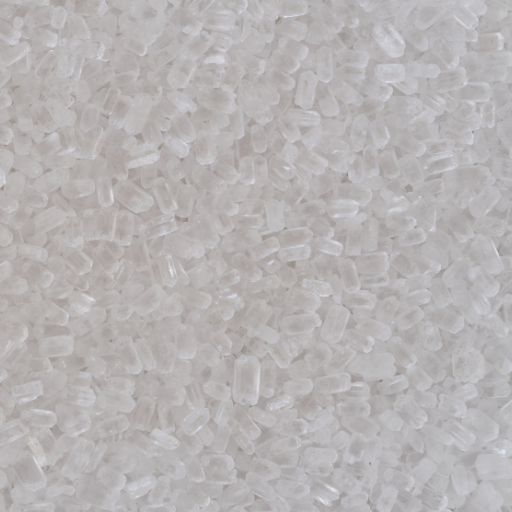
Yes, Epsom salt can be mixed with other garden fertilizers. It provides magnesium and sulfur to supplement the nutrient profile that is not always found in ordinary fertilizers, essential for plant growth. When used correctly, it boosts the intake of other important minerals by plants from the soil. Nevertheless, if you overdo it, there might be problems with calcium and potassium levels since too much magnesium causes an imbalance of nutrients. Thus, combining Epsom salt with a well-balanced fertilization program results in healthier plants.
Combining Epsom Salt with Organic Fertilizers
When mixing Epsom salt with organic fertilizers care must be taken so that this combination doesn’t lead to nutrient imbalances. Magnesium and sulfur salts are great additives to organic fertilizer which normally lacks these elements. Adding Epsom salt makes organic fertilizers perform better; root systems become healthier and photosynthesis increases leading to general physical fitness of plants. To avoid over-fertilization begin by following recommended dosages for both the Epsom salt and the organic fertilizer while at it. Mix them evenly distributed within the soil so that they can get absorbed throughout the plants system. Regular soil testing helps in assessing changes needed in maintaining favorable nutrient levels that promote thriving crops.
Compatibility with Chemical Fertilizers
Epsom salt is generally compatible with a majority of chemical fertilizers enhancing their efficiency thus its usage together such chemicals does not cause any harm. In terms of amino acid synthesis Sulfur from Epsom salts is helpful whereas chlorophyll production requires magnesium which aids in photosynthesis process during utilization Epsom salts combined together with chemically prepared fertilisers should consider what materials are available in the smartly organi sed mixture.
The right proportion of mixing chemical fertilizers with Epson’s salt will depend on what specific needs are required for a particular crop type or soil condition in question . For instance , it has been recommended that one tablespoon of Epsom salt should be mixed in a gallon of water and applied one month after each other as foliar spray . For soil application , just use about one cup of Epsom salt for every 100 square feet that is provided the mixing is done well to avoid clumping in some areas.
To monitor these parameters:
- Soil Testing: Establish nutrient levels before adding extra magnesium and sulfur.
- Keeping Proper Ratios: Over-fertilization can be avoided by precise measurements (e.g., one tablespoon per gallon for foliar spray).
- Monitoring Plant Response: Observe plant health and adjust to maintain a balanced nutrient profile.
Using such guides, it is possible to effectively integrate Epsom salt with chemical fertilizers, thereby promoting the growth of robust, healthy plants.
Soil Testing Prior to Epsom Salt Addition
Before you add any Epsom salt as part of your fertilization program, a comprehensive soil testing is a must. Some of the guidelines from top search results state that:
- Soil Sampling: The idea here is to collect soils from different locations in your garden or field for representative analysis; so far, for accurate results, take 6 inches deep.
- Testing parameters: some of these elements include pH levels and nutrients like magnesium (Mg), sulfur (S), nitrogen (N), phosphorus (P) and potassium (K). You should select a lab that breaks down these nutrients in detail.
- Results Interpretation:
- Magnesium Levels: Most soils have optimum Mg levels between 25 ppm and 50 ppm. However, if this level is not attained then using Epsom salt can be vital.
- Sulfur Levels: For proper plant growth, sulfur should be present at 10-20ppm. Too much sulfur may acidify the soil even further in case of low pH levels.
- Soil pH: Most plants grow well in soil with a pH between 6.0 and 7.0. Soil may have enough magnesium or other nutrients, but if it has a low pH, plants cannot easily access them.
- Nutrient Balancing: Magnesium versus Calcium Ratios evaluation: One always hears about the ideal Ca:Mg ratio falling anywhere between 3 parts calcium to one part magnesium and seven parts calcium to one part magnesium. Exceeding the needed amount of magnesium can displace the maximum amount of potassium and calcium, disturbing this ratio and interfering with the health status of a plant crop.
With careful consideration of these factors in line with the provided recommendations, nutrient balance will result, effectively incorporating Epsom salts together with chemical fertilizers.
Possible Issues and Side Effects of Using Epsom Salt
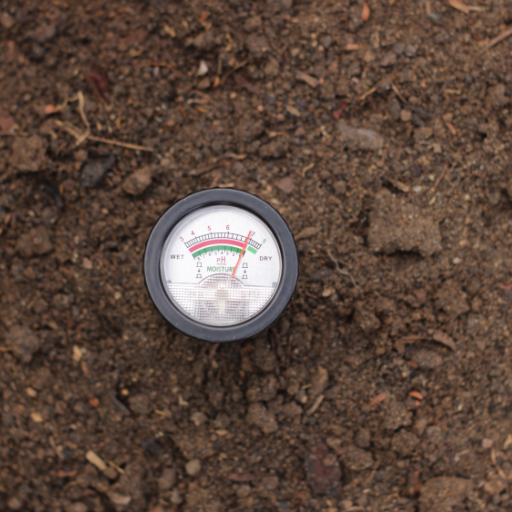
However, there are potential problems and downsides when using Epsom salts in your garden. This occurs mainly due to the excessive amounts of minerals including especially calcium and potassium, which plants need most for growth. These important nutrients can be displaced by excess magnesium in the soil leading to their deficiencies that may have hazardous effect on plants. Salt accumulations in the soils may come as a result of misuse of Epsom salt. It affects its structure leading to poor health of the soil resulting in hindrance to plant root development thereby reducing plant growth over time. Therefore, while it is beneficial to use Epsom salt, it should be used wisely and at the right proportions so that negative impacts are avoided.
Overuse and Its Effect on Soil
The major issue caused by excessive use is magnesium sulfate build-up. High magnesium levels can upset nutrient levels within a soil, preventing essential nutrients such as calcium and potassium from being absorbed by plants efficiently. This disequilibrium causes shortages, thus weakening plant development through yellowing leaves, poor yield, or stunted growth.
Another matter is about changing soil structure possibly through highly salty conditions. In fact, these salts make particles of soil separate which means that they have a low rate of infiltration when there is rain water coming into contact with them therefore minimizing their ability to retain water causing run off hence damaging roots as well as interfering with other processes related to plant lives.
Additionally, if too much Epsom salt is applied to the soil, the amount of sulfates increases significantly. Sulfate ions are crucial for plant growth, but excess concentrations can harm beneficial microorganisms living inside the soil, making them toxic; this consequently limits their activity, thus affecting nutrient recycling processes and decreasing the soil’s fertility further.
- Considering these effects it becomes important for farmers to apply only what is required by specific crops based on soil tests results taken beforehand regularly where possible whilst keeping an eye on some technical parameters such as:
- Magnesium Levels: Regular soil tests should ensure magnesium concentrations remain within optimal ranges (typically 50-100 ppm for most crops).
- Calcium to Magnesium Ratio (Ca:Mg): To avoid nutrient competition, maintain a balanced ratio, ideally between 3:1 and 7:1.
- Sulfate Concentrations: Ensure that sulfate ions do not exceed recommended levels to prevent toxicity.
By following these instructions and constantly monitoring the soil conditions, one can reduce the negative effects of excessive amounts of Epsom salt on their gardens and thus promote a healthy growing environment.
Signs Your Plants Have Too Much Epsom Salt
There are several signs of excess magnesium and sulfates when plants have taken in too much Epsom salt. These can include:
- Leaf Curling and Yellowing: A lot of magnesium leads to curling leaves with yellow tips especially on older ones because it displaces magnesium from other minerals.
- Stunted Growth: Over-application can lead to a nutrient imbalance, particularly influencing calcium intake, which is critical for cell wall development and growth.
- Soil Crusting: High sulfate levels can contribute to soil crust formation, reducing water infiltration and gas exchange. This can result in poor root development and reduced plant vitality.
Inhibited Flowering and Fruit Set: Elevated magnesium concentrations can interfere with phosphorus uptake, which is vital for flowering and fruiting processes.
Technical Parameters:
- Magnesium Levels: To avoid mineral imbalances, ensure soil tests indicate magnesium levels remain within the optimal range of 50-100 ppm.
- Calcium to Magnesium ratio (Ca: Mg): Maintain a balanced ratio between 3:1 and 7:1. An unbalanced ratio can cause nutrient competition, reducing calcium availability.
- Sulfate Concentrations: Sulfate concentrations must be checked to be within the recommended range of up to 20-60 ppm as surplus sulfates could become toxic hampering the uptake of other nutrients.
By carefully observing these signs and monitoring the technical parameters mentioned, gardeners can effectively manage the use of Epsom salts, thus maintaining plant health.
Environmental Considerations
The use of Epsom salt in gardening requires consideration on its environmental effects because although it may provide essential nutrients to plants, overuse can result into soil and water contamination. Excessive magnesium and sulfate levels may leach into aquatic bodies thereby disrupting aquatic ecosystems. Also, soils with high sulfate concentration may deteriorate in structure, which makes them less suitable for plant growth. In order to avoid these risks it is important that Epsom salt should be used sparingly while adhering to recommended application rates while at the same time checking water and soil quality regularly. Finally through sustainable gardening practices plant health will be maintained and at the same time environmental integrity upheld.
Reference sources
- National Garden Bureau – Epsom Salts for Tomatoes
- Summary: This source provides expert insights on using Epsom salts for tomato plants, particularly in soils with a pH of 6.5 or higher. It recommends diluting Epsom salt at a specific ratio and explains the benefits for plant health.
- GrowVeg – Fix Yellow Leaves on Tomato Plants Using Epsom Salts
- Summary: This source offers guidance on using Epsom salts to address yellowing leaves on tomato plants. It details a solution ratio for a foliar spray application method to help improve plant health.
- Harvest to Table – Epsom Salt, Milk, and Organic Fertilizers for Tomatoes and Peppers
- Summary: This source discusses using Epsom salt along with milk and organic fertilizers to benefit tomato and pepper plants. It specifies the application method and frequency for optimal plant growth.
Frequently Asked Questions (FAQs)
Q: What are the benefits of using Epsom salt for tomato plants?
A: Epsom salt, or magnesium sulfate, provides essential nutrients like magnesium and sulfur that are vital for the growth of tomato plants. It helps in the production of chlorophyll, improves nutrient uptake, and strengthens plant cell walls.
Q: How much Epsom salt should I use per tomato plant?
A: Typically, it’s recommended to use about one tablespoon of Epsom salt per foot of plant height. This helps ensure they get enough magnesium and sulfur to support their growth.
Q: When is the best time to apply Epsom salt in my vegetable garden?
A: The best time to apply Epsom salt is at planting time and then continue to apply it every two weeks throughout the growing season. This regular schedule helps maintain consistent nutrient levels for your tomato and pepper plants.
Q: Can I add Epsom salt directly to the soil?
A: Yes, you can add Epsom salt directly to the soil. Simply sprinkle it around the base of the plant and water thoroughly. This method helps the nutrients to be absorbed by the soil and, subsequently, the plant roots.
Q: Is it possible to use Epsom salt as a foliar spray for my tomatoes and pepper plants?
A: Yes, you can dilute one tablespoon of Epsom salt in a gallon of water and spray it on the foliage. This foliar application allows for rapid absorption of magnesium and sulfur through the leaves.
Q: Can Epsom salt help with blossom end rot in tomatoes?
A: While Epsom salt provides magnesium and sulfur, blossom end rot is usually caused by a calcium deficiency. It’s important to ensure that your soil has adequate calcium levels, in addition to using Epsom salt for other nutrient needs.
Q: How do I ensure self-sufficiency in any size backyard using Epsom salt?
A: Using Epsom salt can be part of a broader strategy for self-sufficiency by improving the health and yield of your tomato and pepper plants. Combine it with other practices like using compost, vertical tier systems, and regular watering to maximize the productivity of your vegetable garden.
Q: Can I use Epsom salt on other garden plants and flowers?
A: Yes, Epsom salt can be beneficial for a variety of garden plants and flowers by providing magnesium, which aids in chlorophyll production and overall plant health. Be sure to follow appropriate guidelines for the specific plants.
Q: Where can I buy Epsom salt for my garden?
A: You can purchase Epsom salt from any garden shop or online from an amazon influencer’s storefront. Use the discount code therustedgarden for savings at the Rusted Garden Seed and Garden Shop.
Q: Who can I contact for more information about using Epsom salt in my garden?
A: For more information, you can email [email protected] for questions related to garden care and the use of Epsom salt. They offer expert advice for gardeners looking to improve their plant health and yield.






